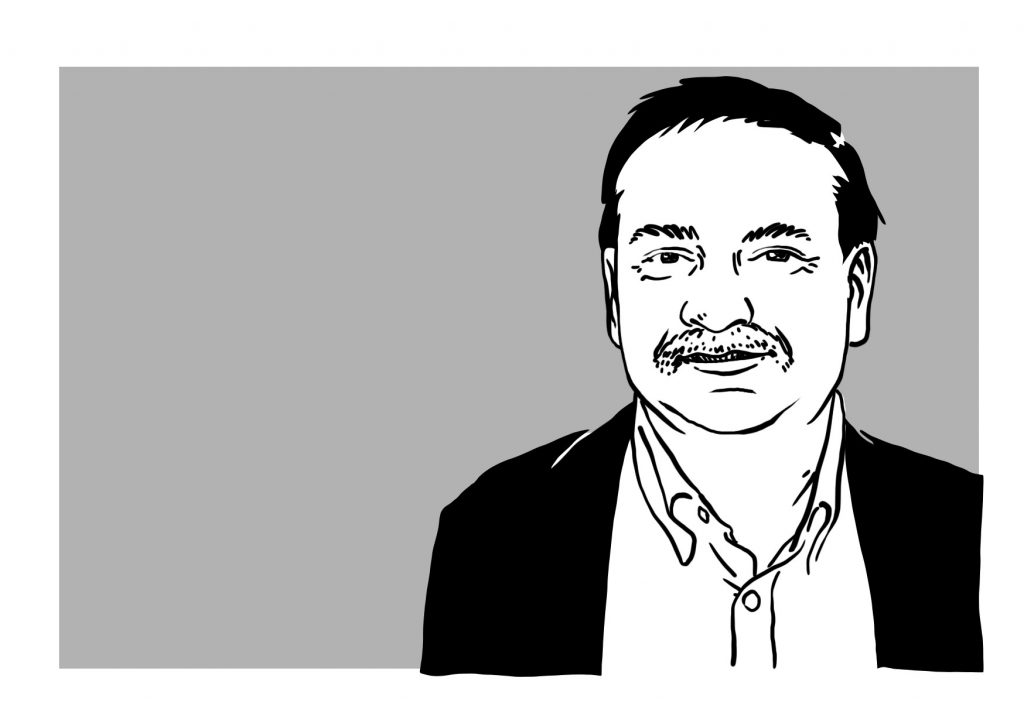As climate-induced disasters become frequent, the Least Developed Countries situated in the most vulnerable regions are faced with immense policy, funding, and resilience challenges. MPP student Nikhil Chaudhary meets with renowned adaptation expert and IPCC contributor Dr. Saleemul Huq, who recently conducted a workshop for the German Federal Ministry of the Environment, Nature Conservation and Nuclear Safety (BMU) in Berlin, to discuss access to climate finance and how community-led adaptation tries to bridge the fragmented decision-making at local, national and supranational levels.
This concludes a 2-part series. Part 1 can be read here
The Governance Post: The manner in which climate negotiations are reported worldwide, the Nationally Determined Contributions (NDC) always dominate the discussion. Does the National Adaptation Plans (NAP), which are now a part of the Paris Agreement, also carry equal weight in the UNFCCC’s multilateral process?
SH: In the adaptation world, yes. For Least Developing Countries, the NAP is extremely important and there also exists a big community of practice there. The Cancun Adaptation Framework adapted by the UNFCCC in 2010 consists of the NAPs. It’s also present in Article 7 of the Paris Agreement. So yes, Adaptation is a significant track now, similar to mitigation. It’s perhaps not as high-profile in the developed world, but it is high profile in the low-income developing part of the world. Based on priorities for adapting, countries lie on a spectrum. For the 100 vulnerable countries belonging to three negotiating groups – LDCs, Africa and small-island states, the adaptation priority is very high.
TGP: But does the UNFCCC place both NAPs and NDCs on the same parity, especially in terms of climate finance? And where does the 100 billion fund transfer committed by developed countries to developing countries fit in this scenario?
SH: Yes. And for us (the LDCs), this has been a victory over time. Initially the priority was skewed. But at present, equal importance is given to both in the decision-making. The imbalance then enters in the flow of funds. Globally, the funds are split as 80% for mitigation and 20% for adaptation. That is another one of our fights. We are aiming for a 50-50 but we haven’t been able to win that argument yet. In the official Green Climate Fund (GCF), after our advocacy, we managed to get the GCF board to reach a decision to allocate equal funding to both. As a result, there have been efforts to spend GCF-controlled funds in a balanced manner. It’s a good principle and we laud the GCF for doing it. But unfortunately, the GCF unit would approximately be only 20% of the aggregate global fund flows. There is a huge amount that runs parallel to them. A lot of bilateral funding, for example, even Germany’s, tends to go more into mitigation. The present advocacy agenda of LDCs is that the principle of 50-50 division of funding now be applied to all sources. Which hasn’t happened yet. As for the 100 billion of funds transfer as per the Paris Agreement, two separate questions arise. Firstly, whether 100 billion is actually enough? And secondly, would this target be actually met? We only have two more years (until 2020) to get there. It’s uncertain for now.
TGP: In Adaptation discourse, local community-driven adaptation has emerged strongly in the last few years. What are your thoughts on that?
SH: That is particularly my area of interest and we (at the International Institute for Environment and Development) have been running a series of international conferences focussed on ‘community-based adaptation’ for many years now. And this has grown rapidly into a large community of practitioners working with vulnerable communities worldwide. They tend to be international development NGOs, like OXFAM and CARE. We have been working with these organisations for many years and now they understand that communities are also vulnerable to climate change (in addition to economic or health-related shocks) and need to adapt. We’ve also been working with local governmental institutions who also work with the communities and they are now being brought into the climate action fold. There is also a fast-growing body of adaptation-focused researchers. Within that there is also a sub-set of researchers working directly at the community level, to which I also belong. So, it’s a growing area of interest, but it’s not receiving sufficient funding and this is also one of our advocacy goals. On one hand there is the imbalance of adaptation-mitigation and even within adaptation, it is not trickling down to the most vulnerable. It is currently going to governments, large-scale projects or big programmes. That needs to change.
TGP: In terms of grassroots, there appears to be a glaring gap between this scale and the decision-making at the national or even supra-national levels. How do you see this challenge being tackled?
SH: Our annual conferences are a part of that campaign. It has two objectives. First is, of course, sharing valuable knowledge from 300-400 practitioners coming from all over the world. Secondly, we frame advocacy demands together, which we then take up to the national and global levels. It’s a collective effort to bring the voices from the grassroots into a wider forum. But often the biggest gap is between the national and the local, rather than the global and the local. With reference to their own government, the poor people don’t have a say. Which is also a reason why they are and remain poor. And that is where coming together as a global community makes it easier to advocate for all vulnerable countries. We’re not telling a particular country that they are doing badly, but we say that all developing countries must focus on adapting with whatever resources they have.
TGP: How do you see identifying ‘co-benefits’ as a tool to integrate SDGs and climate adaptation, which is one of the actions widely suggested to achieve both sustainable development and the Paris Agreement targets?
SH: I am a big proponent of synergies whenever we can identify them. But we should not force the multiplicity of objectives. Sometimes, it’s better to do adaptation or mitigation separately, without mixing the initiatives too much. Where appropriate, we should look for synergies and trade-offs. But if we say every project should theoretically include everything, then there is a risk of spending too much time adding unnecessary programmatic elements. On the other hand, we must dedicate resources to do each initiative well. And that may achieve more effective results than trying to mix everything up at all levels. For instance, there are some SDGs that align well with adaptation and others better with mitigation. SDG 13 includes both. Generally, I am in favour of finding synergies, but only on a case by case basis and not imposing a blanket rule.
TGP: Lastly, since urbanisation is happening at an unprecedented rate in the developing world, how do you see urban adaptation vs. rural adaptation? Should they be treated differently?
SH: Well, increasingly we’re not seeing the two separately. The old school of thought was that all poverty is rural. But it is no longer true. Poverty is now as much urban as it is rural. So, from a development and vulnerability perspective, yes, there are differences, but in my view, it is not that one is more important than the other. Increasingly, the countries that I am familiar with are becoming rapidly urban, and what used to be ‘pro-rural biases’ are slowly being shifted towards a more balanced urban-rural emphasis. This is a positive. For example, the large international development organisations such as CARE or OXFAM traditionally for decades had big rural programmes. But all of them now also have urban-focused programmes.
Also, urban poverty is not the same as rural poverty. What works in the rural context doesn’t work in the urban. So, NGOs have to first understand the urban poor and then how to specifically help them. A good example is the ‘micro-credit model’. It works very well in rural settings where people know each other. The whole basis is that neighbours keep an eye on each other in succession and getting each an individual loan depends on whether your predecessor has repaid it. The repayment is ensured by vigilant neighbours who know each other. But where they tried it, it hasn’t worked well in urban settings. Since urban population is so transient, the social capital just doesn’t exist. Rural-urban migration is another big issue. It’s going to happen on a tremendous scale whether we like it or not and we don’t have solutions yet. We can either find a way to manage migration, or let it be unmanaged and deal with the crisis.
 Dr. Saleemul Huq is the Director of the International Centre for Climate Change and Development (ICCCAD), Bangladesh and a Senior Fellow with the International Institute for Environment & Development (IIED), UK. He was a lead author for the third and fourth Assessment Reports of the Intergovernmental Panel on Climate Change (IPCC) and has co-authored four books on Adaptation Policy. He could be followed on twitter @SaleemulHuq
Dr. Saleemul Huq is the Director of the International Centre for Climate Change and Development (ICCCAD), Bangladesh and a Senior Fellow with the International Institute for Environment & Development (IIED), UK. He was a lead author for the third and fourth Assessment Reports of the Intergovernmental Panel on Climate Change (IPCC) and has co-authored four books on Adaptation Policy. He could be followed on twitter @SaleemulHuq

Nikhil Chaudhary is a section editor with The Governance Post and a first year MPP candidate at the Hertie School. Trained as an architect/urban-planner, he was previously a Senior Associate with the World Resources Institute India where he was engaged in sustainable urban development initiatives for local governments in Asia.
